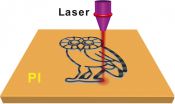Guidelines for treatment of Ebola patients are urgently needed
Call to action from noted infectious diseases experts published in the International Journal of Infectious Diseases
2014-12-10
(Press-News.org) London, United Kingdom, December 9, 2014 - As the Ebola Virus Diseases (EVD) epidemic continues to rage in West Africa, infectious diseases experts call attention to the striking lack of treatment guidelines. With over 16,000 total cases and more than 500 new infections reported per week, and probable underreporting of both cases and fatalities, the medical community still does not have specific approved treatment in place for Ebola, according to an editorial published in the International Journal of Infectious Diseases.
Not only are treatment guidelines lacking, but there are conflicting reports of mortality rates and few descriptions of actual treatments being used. What is clear is that the treatments in industrialized nations with well-developed public health systems differ significantly from those in less-developed nations, especially those with histories of civil wars and little health infrastructure. The few data available indicate that simple fluid replacement and correction of electrolyte imbalances will significantly reduce mortality.
According to authors Eskild Petersen, MD, Editor-in-Chief of the International Journal of Infectious Diseases and Professor of Tropical Medicine, Department of Infectious Diseases and Clinical Microbiology, Aarhus University Hospital, Aarhus Denmark, and Boubacar Maiga, MD, PhD, Faculty of Medicine, University of Sciences, Techniques and Technology of Bamako, (USTTB), Bamako, Mali, "Very little data has emerged. One published study reported a mortality of 72% but astonishingly the study contained no information on any treatment. Thus the question remains whether the patients included in that study received any treatment at all."
These experts explain that management of the epidemic has fallen primarily to Non-Governmental Organizations (NGOs), which have not published any treatment result data and have been simply reporting confirmed cases and outcomes. Without data about the success or failure of specific treatments, treatment may only be palliation and "Ebola hospitals" may be no more than hospices intended to isolate cases from the community.
Staffing of treatment facilities is a crucial issue and it can be speculated that the NGOs do not have access to physicians and nurses with knowledge and experience in high-volume fluid replacement and correction of electrolyte imbalance.
The authors suggest that the World Health Organization take the leadership and develop guidelines for treatment including:
Diagnosis of EVD
Principles for intravenous fluid replacement
Principles for measurement and correction of electrolyte imbalance
Diagnosis and treatment of concomitant malaria
Guidelines for administration of antibiotics based on suspicion of septicemia
HIV testing
Implementation of a reporting system for all EVD treatment facilities with weekly survival figure updates reported for each NGO to ensure quality control, transparency, and optimization of treatment algorithms
Petersen and Maiga further propose that one strategy could be twinning with hospitals in industrialized countries whereby these hospitals adopt an EVD treatment facility and ensure staffing and training. "This of course would need support from national health authorities," they note. "Such a program would ensure that effective intravenous fluid replacement therapy would be provided, which would probably significantly reduce mortality, ensure confidence in treatment facilities from the local population, and thus increase the use of these facilities with earlier admissions and higher proportion of cases treated, isolated, and recovered."
INFORMATION:
ELSE PRESS RELEASES FROM THIS DATE:
2014-12-10
Studying the social interaction of bears through the use of camera traps and visual observations requires that humans be able to tell individuals apart. A study done using volunteers to study the vulnerable Andean bear indicates that people can learn to identify individual bears, given a little practice. The research, done by San Diego Zoo conservationists with international collaborators using photos spanning many years, also indicates that young bears usually retain many of their unique markings as they grow older.
"Knowing, scientifically, that people who have been ...
2014-12-10
Researchers from Johannes Gutenberg University Mainz (JGU) and the Julius Maximilian University of Würzburg are proposing potential new active substances for treating the dengue virus. Just like Ebola, dengue fever is also caused by a virus for which there is currently no cure and no vaccine and can be fatal.
In the quest for medication to treat the dengue virus, the scientific community is focusing on a particular enzyme of the pathogen, the protease known as NS2B/NS3. The reason for this is that inhibitors of similar proteases have been revealed to be very effective ...
2014-12-10
JACKSONVILLE, Fla. -- A marker of immune function that predicts for better outcomes in patients treated with chemotherapy for triple negative breast cancer is also linked to improved prognosis in patients treated with chemotherapy for HER2-positive breast cancer. But that marker -- the quantity of tumor-infiltrating lymphocytes (S-TILs) in a biopsy -- appears irrelevant when trastuzumab is used.
And since trastuzumab, and not chemotherapy alone, is the standard of care for the HER2-positive sub-class of breast cancer, there is no need to test for these lymphocytes in ...
2014-12-10
In patients with metastatic triple-negative breast cancer--a disease with no approved targeted therapies--infusion of pembrolizumab produced durable responses in almost one out of five patients enrolled in a phase-Ib clinical trial, according to data presented Dec. 10, at the 2014 San Antonio Breast Cancer Symposium.
The multi-center, non-randomized trial was designed to evaluate the safety, tolerability and antitumor activity of bi-weekly infusions of pembrolizumab (MK-3475, marketed as Keytruda®). The researchers enrolled 27 patients, aged 29 to 72 years, who had ...
2014-12-10
Several past studies have suggested that the magnetic fields created by phones, high-voltage power lines and other electrical equipment are harmful for humans.
Research first carried out in the 1970's and again subsequently, found an association between people living near overhead power lines and an increased risk of childhood leukaemia. Although some later studies have failed to find such a link, the International Agency for Research on Cancer has categorised low frequency magnetic fields as "possibly carcinogenic."
But a mechanism for this association has never been ...
2014-12-10
While many different combinations of genetic traits can cause autism, brains affected by autism share a pattern of ramped-up immune responses, an analysis of data from autopsied human brains reveals. The study, a collaborative effort between Johns Hopkins and the University of Alabama at Birmingham, included data from 72 autism and control brains. It will be published online Dec. 10 in the journal Nature Communications.
"There are many different ways of getting autism, but we found that they all have the same downstream effect," says Dan Arking, Ph.D. , an associate professor ...
2014-12-10
HOUSTON - (Dec. 10, 2014) - Researchers at Rice University have created flexible, patterned sheets of multilayer graphene from a cheap polymer by burning it with a computer-controlled laser. The process works in air at room temperature and eliminates the need for hot furnaces and controlled environments, and it makes graphene that may be suitable for electronics or energy storage.
Under a microscope, what the researchers call laser-induced graphene (LIG) doesn't look like a perfect chicken wire-like grid of atoms. Instead, it's a jumble of interconnected graphene flakes ...
2014-12-10
Phoenix, AZ (December 10th, 2014) - The brain responds differently to two kinds of sugar, according to a report today at the American College of Neuropsychopharmacology annual meeting in Phoenix Arizona. The study suggests that fructose heightens the response of brain reward circuits to food cues, promoting feeding behavior.
Currently, roughly two out of three U.S. adults are overweight and one out of three is obese. Changes in lifestyle and dietary intake during the past quarter century are thought to be the main culprits, with the increase in fructose consumption of ...
2014-12-10
PISCATAWAY, NJ - Communities with fewer places to buy or drink alcohol also tend to have lower rates of intimate partner violence, new evidence suggests.
The research, published in the January issue of the Journal of Studies on Alcohol and Drugs, suggests that laws limiting what is called "alcohol outlet density" could offer one way to address violence within intimate relationships.
States and communities throughout the United States have enacted various laws to reduce excessive use of alcohol, including limiting outlet density, limiting hours and days of sale, and ...
2014-12-10
The simple act of saving something, such as a file on a computer, may improve our memory for the information we encounter next, according to new research published in Psychological Science, a journal of the Association for Psychological Science. The research suggests that the act of saving helps to free up cognitive resources that can be used to remember new information.
Our findings show that people are significantly better at learning and remembering new information when they save previous information," says psychological scientist and study author Benjamin Storm of ...
LAST 30 PRESS RELEASES:
[Press-News.org] Guidelines for treatment of Ebola patients are urgently needed
Call to action from noted infectious diseases experts published in the International Journal of Infectious Diseases

